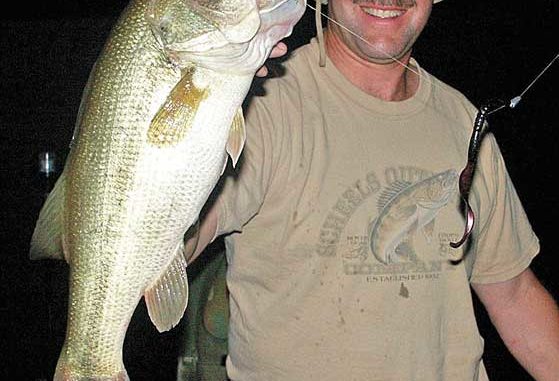
New regulations governing bass fishing on the Santee Cooper lakes went into effect on March 31, 2010. The South Carolina General Assembly made changes that will effect creel and length limits for bass on Lake Marion, Lake Moultrie and the upper Santee River.
The legislation changed the size minimum to 14 inches and lowered the creel limit to five fish per angler per day.
The statute defines Lake Marion as all waters impounded by the Lake Marion dam, including flooded backwater areas of Calhoun and Sumter counties. Lake Moultrie has been defined as all waters between the Pinopolis Dam and St. Stephen Dam. This includes the diversion canal and rediversion canal upstream of the St. Stephen Dam. Waters of the Santee River from the upstream confluence of the Congaree and Wateree Rivers to the backwaters of Lake Marion at the railroad trestle bridge near Rimini are also covered under this statute.
According to the S.C. Department of Natural Resources, the changes to the creel and size limits will promote the long-term health of the largemouth bass population and allow for equitable allocation of the fishery resources to recreational anglers in the region.
Scott Lamprecht, an SCDNR fisheries biologist who supervises the Santee Cooper lakes from the Dennis Center in Bonneau, has been involved in discussions about the change for a while.
“The size and creel limit changes proposed for Santee Cooper are biologically sound,” Lamprecht said. “Our lakes have the appropriate growth potential to support a 14-inch size limit. We have modeled the fisheries in both lakes, and I see no problem with this recommendation. The same is true for the creel limit going from 10 to five fish per day. In many cases, bass fishermen release a large percentage of the fish they catch anyway. (They) are a lot more sophisticated than they were 20 years ago, and so far, I have not heard any negative comments about the regulation changes. I don’t think these changes will have any negative impact on tourism, either. I think it demonstrates good management foresight.”
Local fishing guides support the changes and feel they will have a positive, long-term impact on the fishery. Inky Davis, who has been guiding on both lakes for many years, said he not only agrees with the new regulations, but he recommended the action be taken.
“I was appointed to an SCDNR advisory committee, and one of the first things I did was propose a 14-inch size and 5-fish daily limit,” Davis said.
“From a guide’s viewpoint, it’s positive. Over 99 percent of my clients release all the bass they catch anyway, except for a trophy fish they will mount. Having more fish and a larger average size of fish should only help the local bass- fishing guides. Plus, the fishermen who enjoy the lake will soon be catching more fish in the 14-inch class instead of the 12-inch class. We were one of the few lakes with a size limit anyway, which was 12 inches. So overall, this regulation is a very good thing.
Locals have formed an organization appropriately named Santee Bass Matters; Joe Avin of Summerton is the spokesman for the group. He said the regulation changes are an important step in the overall recovery of the black bass fishery at Santee Cooper.
“This is indeed a victory for the lakes,” Avin said. “This was one of our core goals in Santee Bass Matters, and with the help of Sen. John Land and Rep. Catchy Harvin, we’ve won this battle.”
Land has been very-much involved in this and other issues being discussed by Santee Bass Matters. He said that being an outdoorsman, he appreciates the value of the fishing and economic importance of the lakes to the area. While looking closely at all sides of the issues, he has some very specific ideas on what can be done.
“First of all, I realize there are several different perspectives of what can and should be done,” Land said. “I think the Santee Bass Matters group has done a very positive thing by getting several issues, including the size- and creel-limit issue, to the forefront where they can be closely examined. It’s great that we have people in our community who are passionate enough to get involved.
“I do understand there are different perspectives, but some roads to recovery I can see clearly,” he said. “There are other issues to tackle, but the size and creel limits on bass are ones I’ve supported from the beginning.”




Be the first to comment